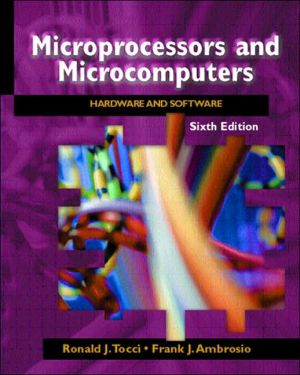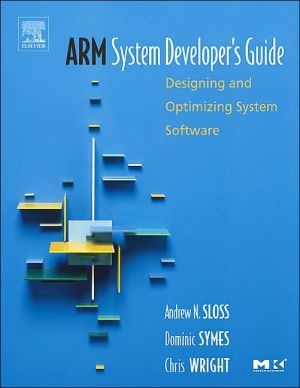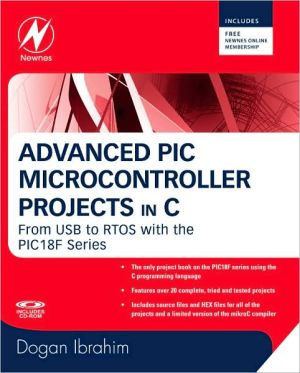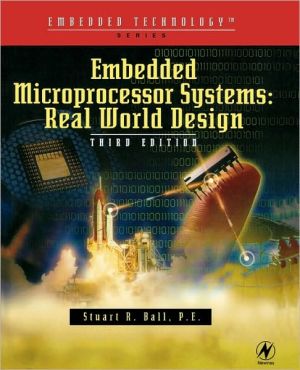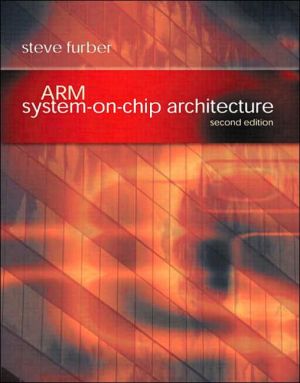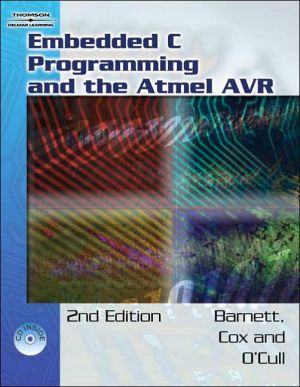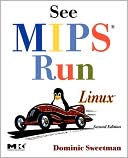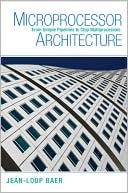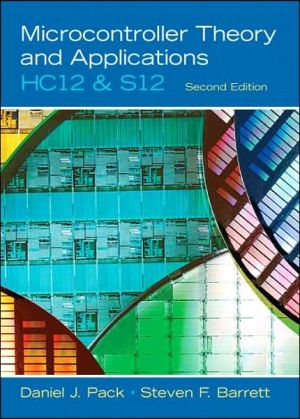Microprocessors and Microcomputers: Hardware and Software
The sixth edition of Microprocessors and Microcomputers: Hardware and Software provides a comprehensive introduction to the concepts, principles, and techniques of microprocessors and microprocessor-based systems. The book focuses on the elements and features of the popular and powerful 68HC 11.\ This edition retains all of the valuable learning aids of the previous editions, including:\ \ Extensive use of clearly explained illustrated examples.\ Clear, uncluttered diagrams and flowcharts.\ A...
Search in google:
Using the popular, powerful, and easy-to-understand 68HC11 microprocessor as a representative example, this book provides a comprehensive introduction to the concepts, principles, and techniques of microprocessors and microprocessor based systems.Chapter topics include Number Systems and Codes, Digital Circuits, Memory Devices, Introduction to Computers, Microcomputer Structure and Operation, The Microprocessor: Heart of the Microcomputer, Programming the 68HC11 MPU, Input/Output Modes, and Input/Output Interfacing.For those interested in a career in electrical or computer engineering. Booknews This text provides an introduction to the concepts, principles, and techniques of microprocessors and microprocessor-based systems, focusing on the elements and features of the 68HC11 microprocessor. Three chapters reviewing digital principles and circuits make the text suitable for use for those with a minimal background or those who have been away from the field for a while. The text can be used in electronic technology, computer technology, and computer science programs from the vocational school to four-year college level. This sixth edition includes new photos, illustrations, and exercises to help explain concepts. There is also an increase in the number of chapter review questions, problems, and troubleshooting exercises. The authors are affiliated with Monroe Community College. Annotation c. Book News, Inc., Portland, OR (booknews.com)
This book was written to provide a comprehensible introduction to microprocessors and microcomputers for a broad range of readers. It can serve as a textbook in electronic technology, computer technology, and computer science programs from the vocational school to four-year college level. It can also be used by computer hobbyists as well as practicing technicians and engineers. A significant portion of the text requires a basic knowledge of digital principles and circuits. For this reason, a comprehensive review of this material is presented in the first three chapters to help those readers who have only a minimal background or who have been away from the field for a while. It is, however, worth noting that in several sections of Chapter 8, the topic of A/D conversion is addressed. For a better understanding of the text in these sections, elementary knowledge of Analog-to-Digital Converters (ADCs) is required.\ The major philosophy that has been followed in this book is that the principles and techniques of microprocessors and microprocessor-based systems are the most important concepts to understand, and it is not necessary to survey the whole field of available microprocessors and microprocessor applications. We believe that the best pedagogical approach is to use a currently popular, powerful, yet easy-to-understand microprocessor chip as the vehicle for teaching these concepts. We also believe that since 8-bit microprocessors are simple and easy to understand, this makes them an appropriate choice for an introductory textbook. As such, we have chosen to use the 68HC11 microprocessor as that vehicle. The 68HC11 is one of the most powerful and flexible 8-bit microprocessors in general use, and it contains all of the elements and features that need to be part of an introduction to microprocessors and microprocessor applications. Everything the reader learns and understands using this representative device can be readily transferred to other microprocessors and applications, including the more complex 16-bit and 32-bit devices.\ This sixth edition retains all of the valuable learning aids of the previous editions, including (1) extensive use of clearly explained illustrative examples to provide immediate reinforcement; (2) clear, uncluttered diagrams to enhance the understanding of the written material; (3) liberal use of flowcharts; (4) extensive coverage of material on troubleshooting digital systems, internal and external IC faults, and test equipment used to troubleshoot digital systems; (5) several Troubleshooting Case Studies covering 1/O interfacing circuits and RAM decoding logic in a 68HC 11-based circuit; (6) glossaries of important terms at the end of each chapter for easy review of chapter contents; (7) over 470 end-of-chapter questions and problems of varied complexity; (8) a comprehensive index with certain page numbers in boldface type to indicate end-of-chapter glossary definitions; and (9) an extensive appendix containing a detailed description of each of the 68HC 11's available instructions as well as a complete Op-Code vs. Instruction Cross Reference.\ The major enhancements to this edition are the inclusion of material on floating point numbers and the use of additional pictures, illustrations, and exercises its the explanation of certain concepts. This includes the following:\ \ Chapter 1. Addition of material on floating-point numbers and Motorola 68HC11 Floating-Point Format.\ Chapters 7-9. Use of the industry standard of one instruction per line when writing assembly language programs.\ Chapter 7. Inclusion of illustrative aids and step-by-step analysis to explain several addressing modes of the 68HC 11 microcontroller.\ All Chapters. Significant increase in the number of end-of-chapter questions, problems, and troubleshooting exercises.\ Expansion of Appendix A to include the reference list and the Opcode Maps for all of the 68HC 11 MCU Instruction Types.\ \ In preparing this sixth edition, the very helpful comments and suggestions of several users and reviewers were considered and acted upon. The authors particularly wish to acknowledge Rickey McFadden, Paris Junior College, Paris, TX; Vincent Kassab, Erie Community College North Campus, Williamsville, NY; Fereydoun Jalali, Fort Valley State University, Fort Valley, GA; and Gabor Karsai, Vanderbilt University, Nashville, TN, who assisted in this capacity.\ Ronald J. Tocci Frank J. Ambrosio Monroe Community College
1Number Systems and Codes12Digital Circuits283Memory Devices634Introduction to Computers1195Microcomputer Structure and Operation1646The Microprocessor: Heart of the Microcomputer2097Programming the 68HC11 MPU2428Input/Output Modes3539Input/Output Interfacing414Appendix AComplete 68HC11 MCU Instruction Set486Appendix BThe 68HC11 MCU Block Diagram541Appendix CThe 68HC11 MCU Register and Control Bit Assignments543Answers to Selected Problems546Index551
\ This text provides an introduction to the concepts, principles, and techniques of microprocessors and microprocessor-based systems, focusing on the elements and features of the 68HC11 microprocessor. Three chapters reviewing digital principles and circuits make the text suitable for use for those with a minimal background or those who have been away from the field for a while. The text can be used in electronic technology, computer technology, and computer science programs from the vocational school to four-year college level. This sixth edition includes new photos, illustrations, and exercises to help explain concepts. There is also an increase in the number of chapter review questions, problems, and troubleshooting exercises. The authors are affiliated with Monroe Community College. Annotation c. Book News, Inc., Portland, OR (booknews.com)\ \ \ \ \ BooknewsAn introductory textbook for courses in electronic technology, computer technology, and computer science programs either in vocational schools or fuller academic settings; Tocci and Ambrosio themselves teach at a community college. Computer hobbyists and practicing technicians and engineers might also find the treatment useful. The material requires a basic knowledge of digital principles and circuits, but those are reviewed extensively in the first three chapters for readers who are without the background or have been away from the field. The 68HC11 eight-bit processor is taken as the main example because of its simplicity. Earlier editions appeared between 1979 and 1997; the fourth adds principles and techniques of troubleshooting throughout the text. Annotation c. Book News, Inc., Portland, OR (booknews.com)\ \
